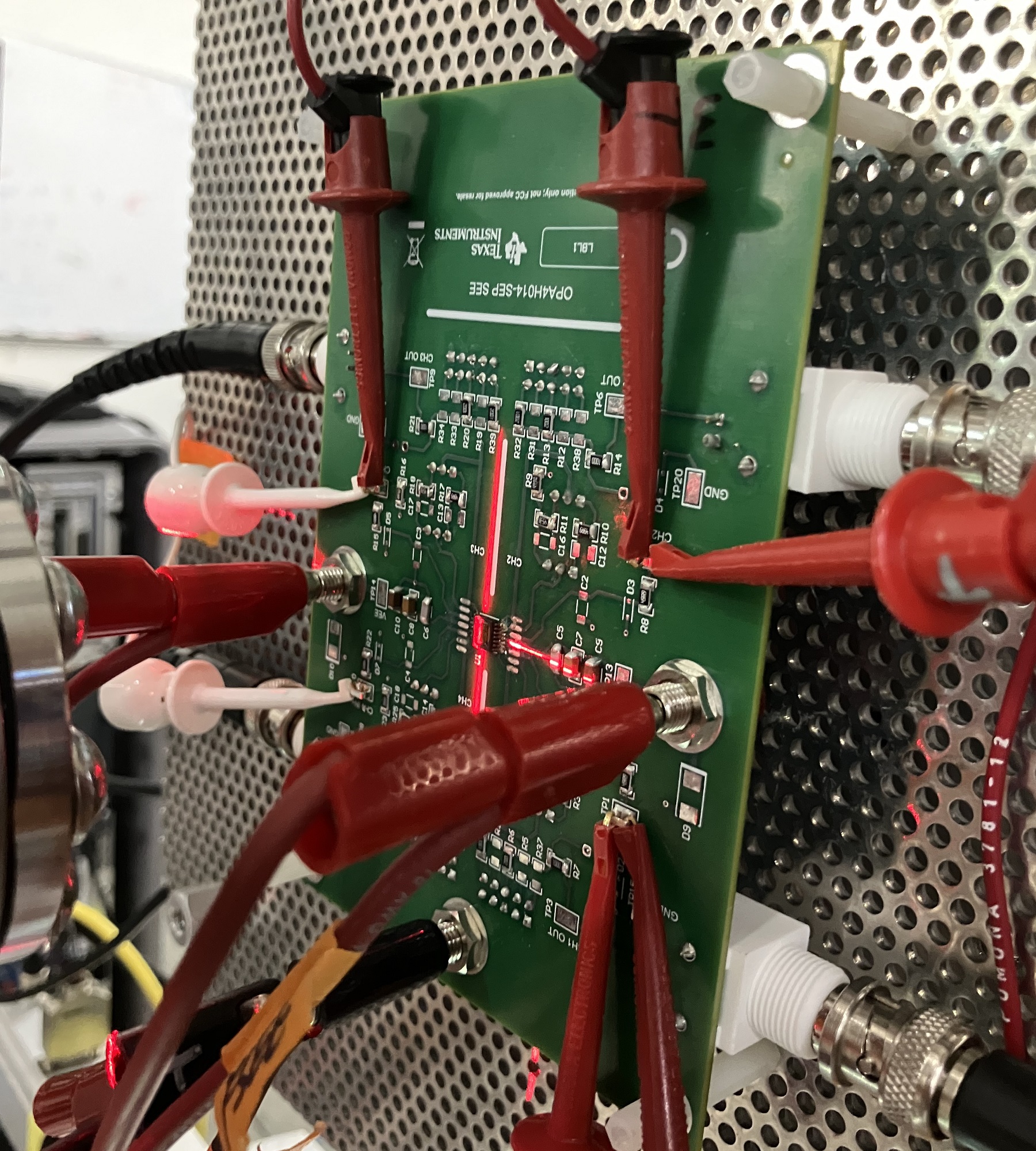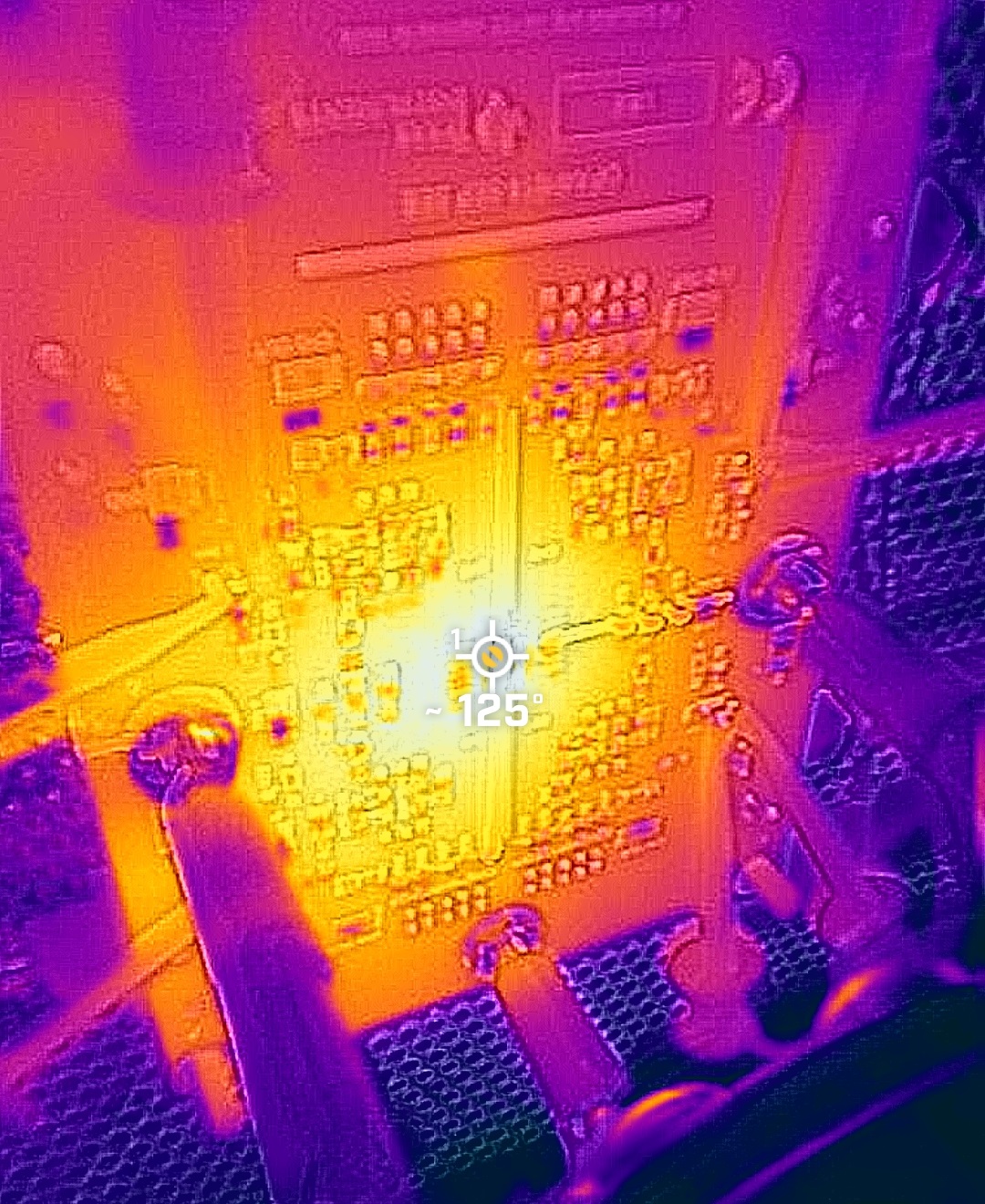SBOK052 May 2024 OPA4H014-SEP
5.3 SEE Characterization Results: MSU FRIB Linac
For correlation purposes, two of the devices (DUT 3 and DUT 5) previously tested at TAMU were re-tested for SEL and SET at MSU's FRIB. The die temperature was held at 125°C as the units were exposed to an ion stream of 129Xe, for a nominal surface LET of 50.4MeV-cm2 / mg (Bragg peak approximately 69.3MeV-cm2 / mg). A nominal flux of 105 ions / s-cm2 was used, with each run concluding once a fluence of 107ions / cm2 was reached. A latch-up was not observed for either DUT.
Testing was performed for each device in unity gain at both minimum and maximum rated supply voltage. Additionally, testing was repeated for each device at room temperature. For all testing, the outputs were observed with oscilloscope cards and transient events were recorded. An input signal of 1V was applied to all channels, with scope window thresholds set at 0.9V and 1.1V. Each output channel was loaded with a 2kΩ resistor to GND (midsupply). See Appendix B for additional data, such as histograms and plots of supply current.
 Figure 5-6 Board Mounted
Figure 5-6 Board Mounted Figure 5-7 Thermal Camera
Figure 5-7 Thermal Camera| Run Number | DUT | Die Temperature (°C) | Ion | LETeff (MeV-cm2 /mg) | Flux ( Ions/s-cm2) | Fluence (Ions/cm2) | Total Ionizing Dose (rad) | VS (V+ − V-) | Events (Sum of All Channels) |
|---|---|---|---|---|---|---|---|---|---|
| 129 | 3 | 125 | 129Xe | 50.4 | 1.010 × 105 | 1.003 × 107 | 8091 | 4.5 | 2004 |
| 130 | 3 | 125 | 129Xe | 50.4 | 1.010 × 105 | 1.001 × 107 | 8079 | 18 | 809 |
| 131 | 3 | 25 | 129Xe | 50.4 | 1.010 × 105 | 1.008 × 107 | 8137 | 18 | 645 |
| 132 | 3 | 25 | 129Xe | 50.4 | 1.010 × 105 | 1.006 × 107 | 8119 | 4.5 | 1785 |
| 133 | 5 | 125 | 129Xe | 50.4 | 1.010 × 105 | 1.001 × 107 | 8088 | 4.5 | 1882 |
| 134 | 5 | 125 | 129Xe | 50.4 | 1.010 × 105 | 9.999 × 106 | 8080 | 18 | 793 |
| 135 | 5 | 25 | 129Xe | 50.4 | 1.010 × 105 | 1.007 × 107 | 8135 | 18 | 755 |
| 136 | 5 | 25 | 129Xe | 50.4 | 1.010 × 105 | 1.008 × 107 | 8149 | 4.5 | 1766 |
The data supports the conclusion that the OPA4H014-SEP is robust against SEL to the maximum recommended supply voltage (18V) when exposed to heavy ions up to 50LETeff (MeV-cm2 / mg). Testing with the die at 125°C was observed to yield higher (10% on average) event counts per run than testing at ambient temperatures.